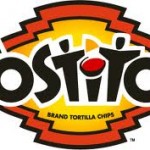What do you see?
Every day businesses and community groups try to influence us with logos and symbols.
Did you ever look close–really close–at some of these logos? Sometimes there are hidden messages.
How many times have you seen the Amazon logo?
Have you ever noticed the A-Z arrow? I didn’t.
Could this be a visual cue saying, “You can purchase everything from A to Z”? Not just books.
Business logos and commercials dominate the social media and we often take them for granted. But no doubt about it, they influence our attitudes.
Baskin Robbins
What’s your first impression?
What’s your second impression?
Baskin Robbins’ logo reminds us they have 31 different flavors of ice cream—can’t you just taste the butter pecan and chocolate chip?
Are you surprised the number 31 is right there in front of you?
Did you notice?
Tostitos
Mexican flag colors, right.
But there is a whole scene right in the middle of the logo.
Do you see two people?
They are sharing chips and between them is a table with a cup of salsa.
Now that you are aware, will you notice the embedded image on every Tostito bag of chips?
Will you tell your friends?
Your actions are helping to socially construct the meaning of their logo, the meaning of Tostito’s brand–Friend to friend.
Tour de France
The most famous bike race in the world, The Tour de France logo shows an action shot of a man on a bike.
See it? The R is a man bent over the yellow wheel of a bike.
What emotions do you feel?
Bet the marketing company spent hours researching the color of the t-shirt including study groups on whether the best color was blue, red or yellow.
Perhaps this ad was donated or created by a student…or a giant ad company on Fifth Avenue.
Wolf Wolfensburger spent years teaching us to be thoughtful about the images, logos and symbols we use when we market our agencies and companies that worked with people with disabilities.
He spoke of the social construction of knowledge–we are what others say we are:
“Impairment is a normal part of life. Disability is not. That is caused by our attitudes towards people who have impairments. It’s about time we accepted that wholeheartedly. Doing so is good for people who are disabled, for community and for the planet.”
Final Question: What do you see?
(Martha Perske, artist)
As parents and caregivers of adults with disabilities, every day we send out messages to the world.
Our neighbors, our relatives, our children and our community are watching and learning. They are socially constructing what they see based on their experiences.
Are we spreading the message that people with disabilities over 18 years old are adults—NOT children?
Are we marketing our services in unhuman images of angels, devils, elves, giants in our company names and logos?
Does a group of people with autism walking in a store blend in, or do they draw attention to themselves?
Are adults with disabilities seen as capable employees, volunteers, contributing citizens?
Or do community members see them as needy–asking for charity, or pity?
Are we promoting inclusion and normalization?
Are we teaching others what they see? how to understand?
If this was a business, what would our logo look like and what would be the embedded message?
How are we socially constructing our environment, our world?
Your Turn:
Please share your ideas and thoughts. What message do we send on TV? in the community? What message in our personal life? What do you wish would happen?
Keep Climbing: Onward and Upward
All my best,
Mary
Related Posts:
The Race toward Inclusion| Do you see it?
—





